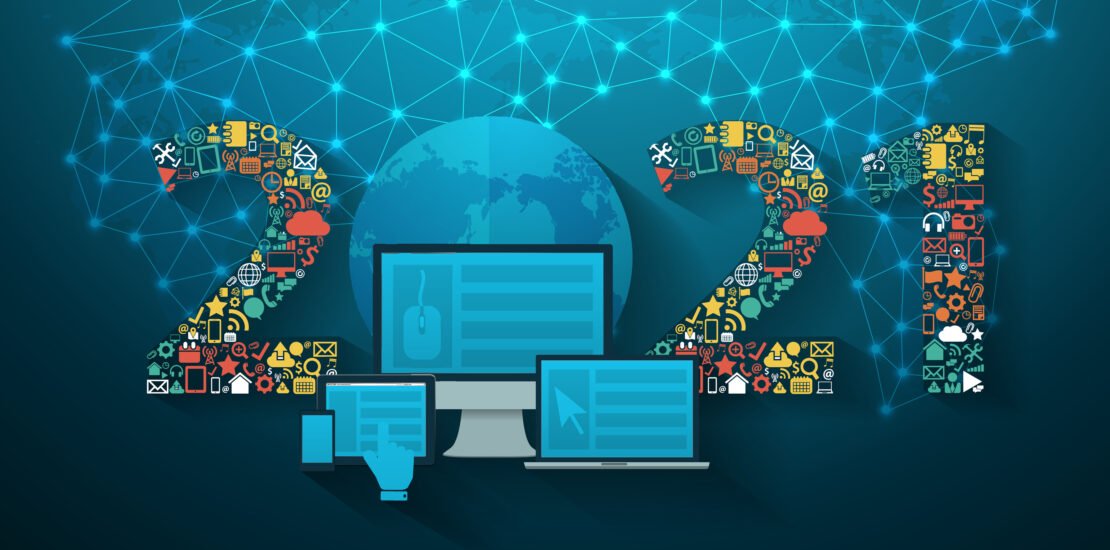- February 12, 2021
- Posted by: Stacey Wisniewski
- Category: Marketing Strategy

What’s Your Digital Marketing Strategy in 2021: “Wait and See” or “All-In”?
There was no one-size-fits-all B2B marketing strategy in 2020.
As an B2B Agency owner, I get a bird’s eye view into marketing trends, client strategies and changing budgets. The first half of 2020 was a “wait and see” time for many B2B businesses. No one knew whether the worldwide pandemic would be temporary or permanent, and B2B decision makers were unsure how their sales would be impacted. As a result, many chose to cut their marketing budgets – some up to 50% – to preserve cash flow. Their marketing activities centered around driving/maintaining brand awareness through quality content and search engine optimization (SEO), email and social campaigns, and referral partnerships.
With uncertainty and unrest continuing in the second half of the year, a focus on “survival” continued. However, businesses in growth industries like Amazon and Software-as-a-Service (SaaS)-based technology, doubled down on their marketing investments. Given an increasing need for their products, services and distribution, these businesses increased their marketing budgets to drive higher brand awareness and preference. They implemented a combination of tactics – paid ads, sponsored webinars, online video, chatbots, influencers, blogging and social media. Those that did not have a marketing automation platform in place, licensed one – so they could execute campaigns across their website, email, social channels, and Google Ads from one place, and measure the success of their efforts in directly driving revenue.
The “digital-first” sales & marketing model is here to stay.
While the economy remains in a state of flux, one thing is clear. We are in a digital-first world. McKinsey’s report from October 2020 confirmed that only 20-30% of buying/selling activity was happening in-person, and there seem to be no complaints from customers. 70-80% of B2B decision makers now prefer remote or digital self-service (see chart below). The reasons they state are ease of scheduling, savings on travel expenses, and safety.
The same McKinsey report highlighted the growing belief that a digital-first model has become MORE EFFECTIVE at reaching and serving customers. In April, 54% of companies believed that the digital-first sales model was “equally or more effective”. In October, that number had grown to 75%.
What does that mean for B2B marketing in 2021?
As the trends illustrate, 2021 should be the year for B2B brands to go all-in on digital marketing. If you are one of those businesses still in “wait and see” mode, you need to commit.
Start by investing in your website. Your website is now the center of your brand identity. Make sure that your home page not only projects your brand story but is simple and easy to navigate. Every visitor to your website will be searching for answers to one or more of these five questions:
- Who are you?
- What do you do?
- How can you help me?
- Why should I buy from you vs. every other company in your space?
- How do I contact you?
One of the best ways to build credibility and promote yourself as a thought leader in your industry is to consolidate your content in one place on your website – a “Content Library” – and provide a mix of promotional and educational content. Did you know that before B2B decision makers talk to a salesperson, they will have read at least 10 pieces of content? Make it easy for them to find yours by housing it all in a well-structured “Content Library.”
Which digital marketing tactics are working best right now to drive leads? WIZ Advisors employs a combination of:
- high quality content on your website,
- social posts and participation in online communities,
- paid Google, LinkedIn and Facebook ads,
- sponsored content (webinars, articles, CEO interviews) on third party sites,
- email marketing that directs your audience to relevant content or offers on your website, and
- online influencers if relevant.
If you don’t use a marketing automation platform already, invest in one that allows you to execute and measure results across all of the digital platforms above from one place.
Is offline marketing dead? Not at all. A campaign that includes direct marketing can be wildly successful if you segment your prospect list and focus on prospects who are most likely to purchase (given the higher cost). Consider adding a QR code on a postcard or letter that takes the customer to a customized URL for a personalized offer.
A lot of things remain uncertain in 2021, but your B2B marketing strategy shouldn’t be one of them. Go all-in on digital. With the right brand positioning, website, digital tactics, and integrated marketing platform, you will be well positioned for success.


